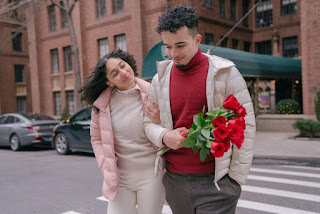ads here
Acupuncture is an historic Chinese language language treatment with a historic previous of lots of of years. Throughout the olden days, the practitioner made use of 9 completely totally
different acupuncture needles. Let's uncover out the goal of each needle kind and understand additional regarding the observe of acupuncture.
In Typical Chinese language language Medicinetherapy, TCM practitioners use acupuncture needles to stimulate the nerves present beneath the pores and pores and skin flooring and eradicate Qi imbalance.
Acupuncture needles may set off a slight ache on the place of insertion and, so the practitioners must make use of sharp needles to make the treatment cozy. By selecting the best acupuncture needle, the affected individual will actually really feel little to no discomfort and nonetheless get a solution to his/her downside. Acupuncture needles help in stimulating the immune system, bettering blood circulation, and therapeutic the wound.
Have you learnt there have been 9 styles of acupuncture needles throughout the historic days? The "9 Needles" have been first quoted in HuangdiNeijing’sInternal Conventional Ling-Shu. TCM practitioners normally regarded the emperor Huangdias an influential decide in Typical Chinese language language Medicine Treatment. Let’s uncover out additional regarding the collective needling gadgets which were in model in Historic China.
1. Spade Needle (Chan Zhen)
The spade acupuncture needles have an enormous head with a sharp end. The acupuncture needle is significantly huge, and the tip half is sharper than totally different needles. More often than not, the spade needles are excellent for managing the Yang deficiencies similar to coldness, clamminess, fatigue, and so forth. It isn't unusual to utilize the needleswhen the sickness fails to stay at a selected place.
2. Spherical Pointed Needle (Yuan Zhen)
Yuan Zhen is a round-pointed needle with an oval-shaped tip. The Ling-Shu textual content material mentions that it has an egg-shaped tip. Historic practitioners used it tomassage the rift of the flesh. The needle tip won't be glorious for insertion throughout the pores and pores and skin. On the alternative, it's best to use it to position stress on the pores and pores and skin externally at a specific stage (acupressure).
3. Stress Needle (Ti Zhen)
With a barely blunt head throughout the type of a grain, the stress needles are very similar to round-pointed needles that help with acupressure. The work of a stress needle is to stimulate qi motion and deal with the imbalances with out piercing the pores and pores and skin. The excellence between round-pointed needles and stress needles is their measurement. Stress needles are significantly longer than round-pointed ones.
4. Sharp-Edged Needle (Feng Zhen)
The sharp-edged needles have a triangular head for the straightforward piercing of the pores and pores and skin. Often, the practitioners used them for treating persistent illnesses. The acupuncture needles are excellent for drawing out blood from the pores and pores and skin. And they also help in eliminating additional heat from the physique. Very similar to modern-day lancets and bleeding needles, there have been many benefits to using sharp-edged needles. With an appropriate strategy, the practitioner can reduce the hardening of arteries, improve insulin sensitivity, eradicate an an infection, and so forth.
5. Sword-Fashioned Needle (Fei pi Zhen)
The sword-shaped needle, as a result of the title suggests, is much like the type of a sword. If the affected individual is affected by an hurt that has resulted in pus, TCM practitioners counsel using the sword-shaped needle. It helps to eradicate purulent matter from the wound.
6. Spherical-Sharp Needle (Yuan Li Zhen)
The round-sharp needle has a novel type like a spindle. With the instrument-tip being terribly sharp and the head comparatively wider, it is glorious for penetrating deep inside a variety of pores and pores and skin layers. Its distinctive type helps to puncture the pores and pores and skin shortly and with minimal ache. TCM practitioners used it to stability the qi and improve blood motion in a specific space.
7. Excessive-quality Needle (Hao Zhen)
The excellent needlesareundeniably skinny, like an excellent strand of hair. Akin to the modern-day filiform acupuncture needles, the needling gadgets have a sharp tip with a lean physique for easy insertion. Specialists favor using them to generate deqi sensation and take care of the blockage throughout the physique's energy motion.
8. Prolonged Needle (Chang Zhen)
Prolonged needles resemble fineneedles, although they're longer than the latter. The dimensions is prolonged enough with a sharp tip for inserting deep contained within the pores and pores and skin's flooring. It has a pointed tip and an prolonged cylindrical physique totreat deep locations with minimal ache. Lately, you will notice that prolonged needles in varied sizes.
9. Large Needle (Da Zhen) Thriller Rooms
The large needles have a cylindrical plank with slightly little bit of a rounded tip. The tip of an enormous needle is way much less sharp than an excellent needle. The needle helps to empty water from the joints and thus, helps throughout the low cost of swelling. TCM practitioners normally use them throughout the cases of swollen lymphatic nodes.
The standard observe of acupuncture has superior. Although the complete 9 styles of needles normally are usually not in use within the current day, a variety of of them are a most popular choice of TCM practitioners for treatment. Excessive-quality acupuncture needles are amongst the most-used gadgets from the 9 needles. Even sharp-edged needles & prolonged needles are in use within the current day.
Together with them, practitioners now use explicit auricular acupuncture needles and acupressure magnets. As a TCM expert, it is important to know the affected individual's scenario and the rationale for the illness. Remember using appropriate form of gadgets is vital for quick and guarded restoration.










0 Comments